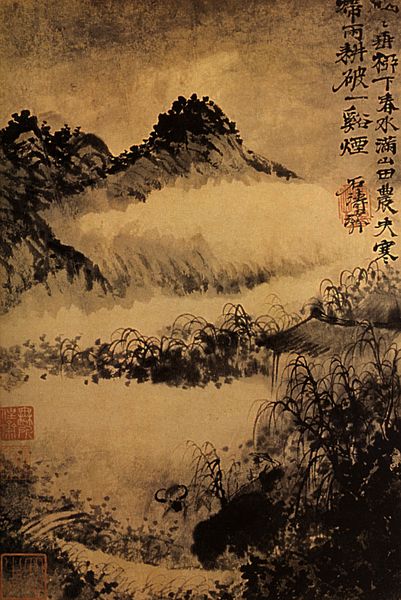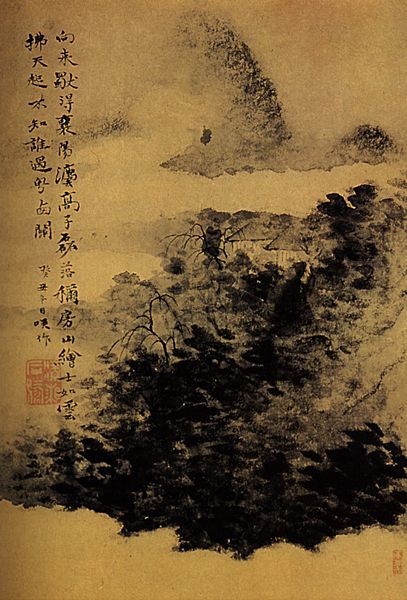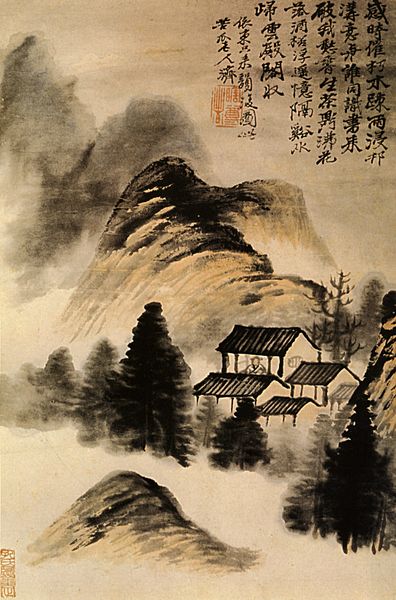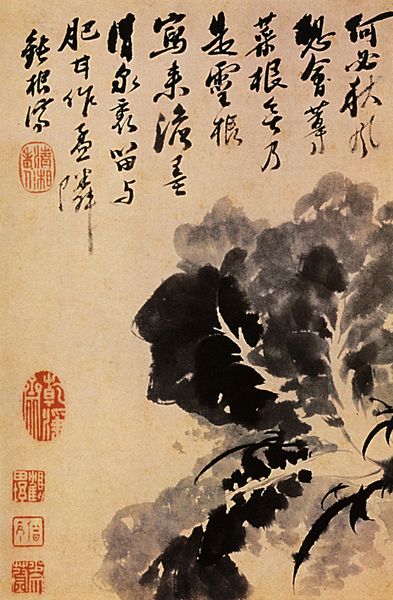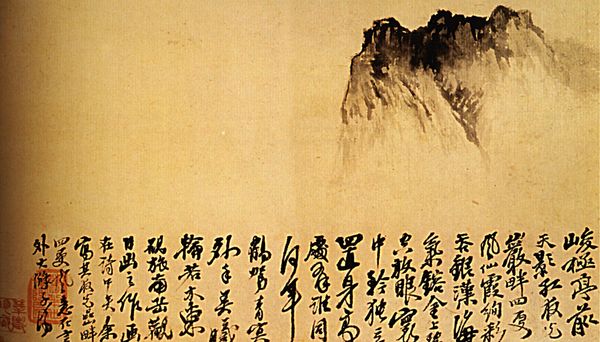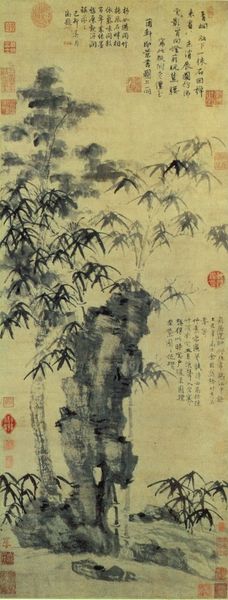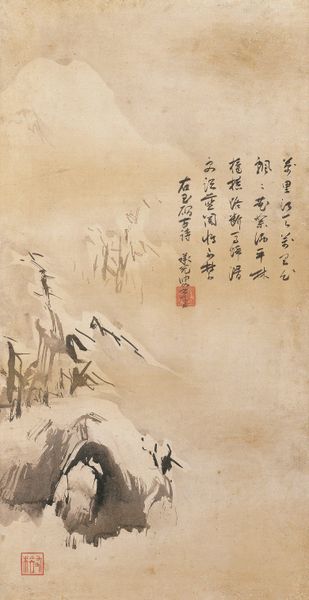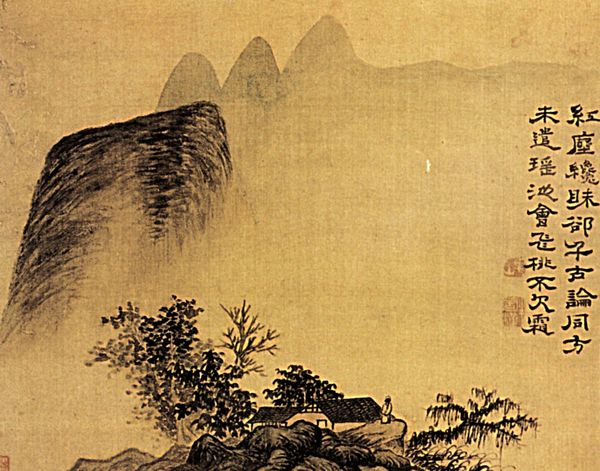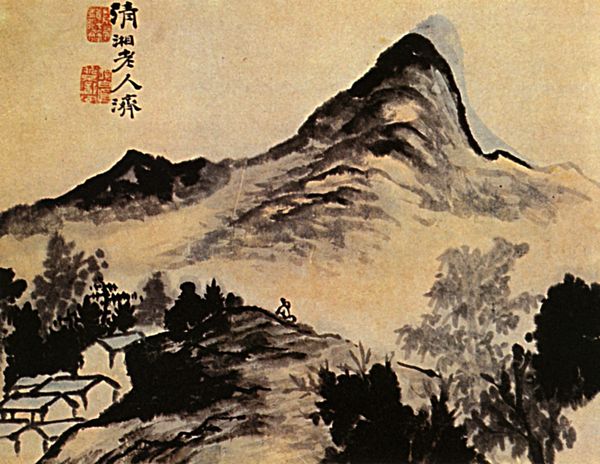
painting, paper, ink, mural
#
painting
#
asian-art
#
landscape
#
paper
#
oil painting
#
ink
#
mountain
#
mural
#
watercolor
Dimensions: 45 x 30.8 cm
Copyright: Public domain
Editor: Here we have Shitao's "Mountains in the Mist," created in 1702 using ink on paper. It's such an ethereal and almost dreamlike landscape. How do you interpret this work, focusing on the materials and how they contribute to the piece? Curator: Well, looking at this, I see more than just a pretty landscape. Shitao's choice of ink and paper is deliberate. Paper production in this period involved significant labor and skill, and the quality would greatly impact the ink's behaviour. Notice the gradations, the blurring? This speaks to an intimate understanding of how ink interacts with this specific paper. It highlights the artist’s physical engagement and material knowledge in realizing the image. Editor: That's interesting, I hadn't considered the paper itself so critically. I was focused on the sort of misty atmosphere that the ink creates. Curator: Consider also how ink production itself, a process steeped in tradition and reliant on specific materials, informs the artistic process. What kind of labour practices sustained the community that provided the artist these fundamental components for creativity? We tend to overlook these underlying systems. Editor: So, it’s not just the final image, but also the entire production chain of materials that gives the work meaning? Curator: Precisely! Shitao isn't just representing mountains; he's implicitly referencing the complex web of materials, labor, and economic exchange that made this representation possible. By foregrounding the means of production, Shitao challenges a romanticized view of artistic genius. Editor: I see. So by thinking about the materials and their origins, we're actually gaining a deeper insight into the art itself. I'll never look at ink the same way again! Curator: That's the goal. Shifting focus to appreciate and assess the labour involved transforms how we appreciate art.
Comments
No comments
Be the first to comment and join the conversation on the ultimate creative platform.
